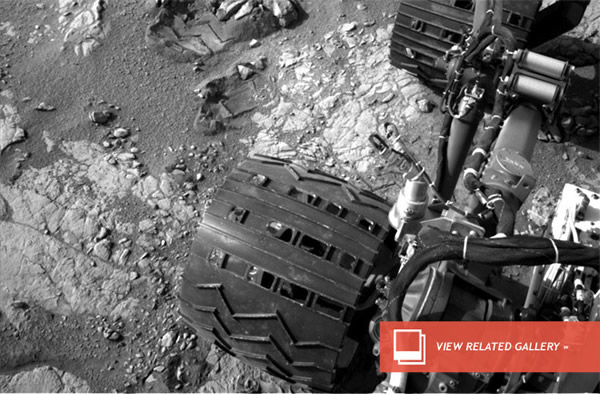After Glitches, Rover Curiosity Continues Work
After Glitches, Rover Curiosity Continues Work
NASA’s Mars rover Curiosity, sidelined by two unrelated computer glitches, has resumed analyzing a sample of powder drilled out from inside a slab of bedrock that has revealed the planet most like Earth has the chemistry to support microbial life.
Science operations had been on hold for most of the month due to computer problems. The first glitch, which may be have been due to a radiation hit, prompted flight controllers to switch Curiosity to its backup computer system. That work was on schedule to be finished last week when the rover detected a corrupted data file and put itself into a second so-called “safe-mode,” suspending science again.
Curiosity’s unplanned work break ended over the weekend, NASA said on Monday.
Before the shutdown, the rover relayed the results of its first chemical analyses of powder drilled out from inside a rock known as “John Klein,” and located in the rover’s Gale Crater landing site.
The sample showed the rock contains six elements needs for life — hydrogen, carbon, oxygen, nitrogen, sulfur and phosphorus — plus water that had not been not too acidic or too salty.
Over the weekend, Curiosity delivered a second portion of the rock powder into its Sample Analysis at Mars (SAM) instrument for additional analysis. Scientists plan to drill a second hole into the mudstone to obtain more powder to verify the results and look again for organic carbon.
The first drill sample’s carbon was in the form of carbon dioxide, which on Earth at least is not a problem for some well-adapted microbes to make use of.
A second drill hole will have to wait until after Curiosity’s planned month-long break, which begins April 4. Between then and May 1, the sun falls between Earth and Mars, blocking radio communications.
Eventually, the rover is expected to explore a three-mile high mountain of sediment rising from the center of Gale Crater.
The rover arrived on Mars on Aug. 6 for a planned two-year mission.
Mar 26, 2013 03:12 PM ET by Irene Klotz












